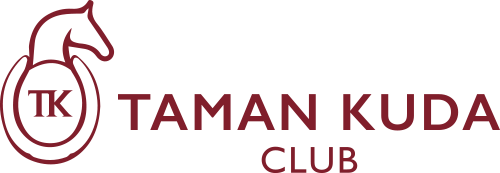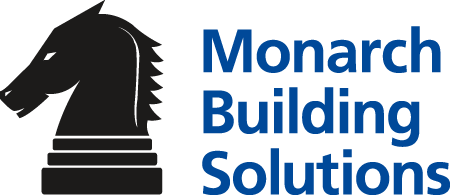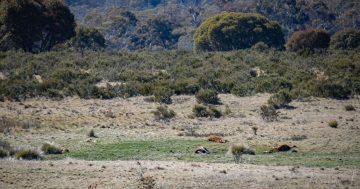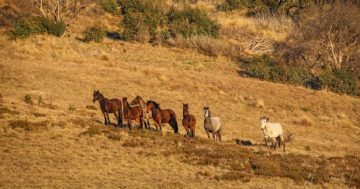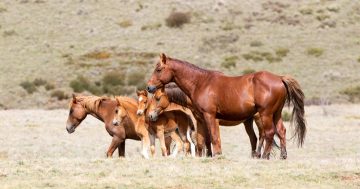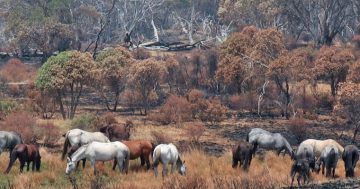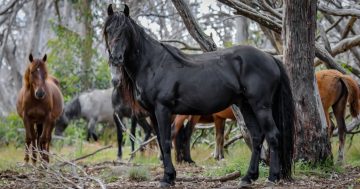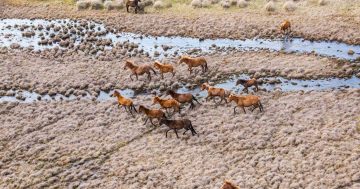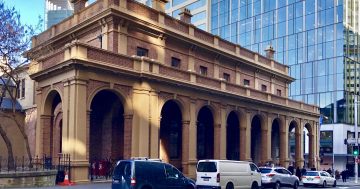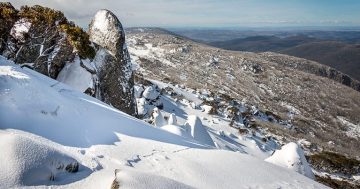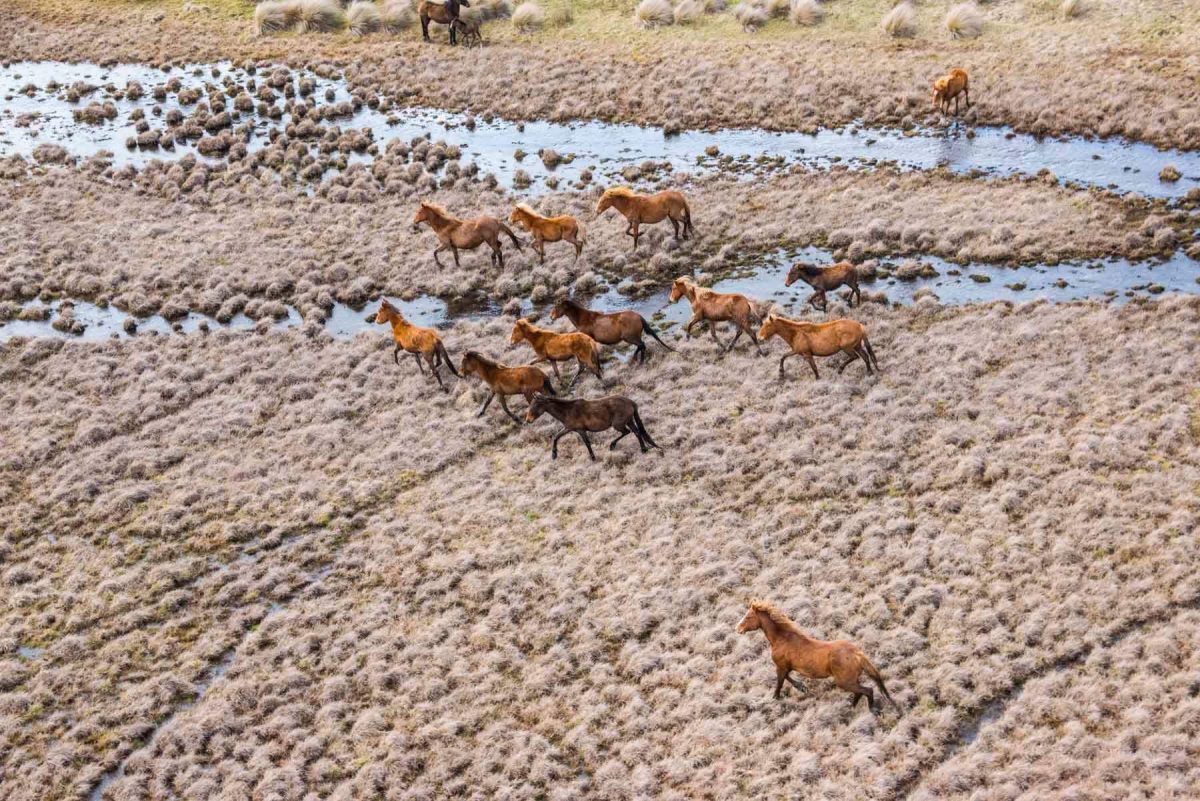
The latest population statistics indicate between 1579 and 5639 horses remain in Kosciuszko National Park. Photo: Invasive Species Council.
The number of wild horses in Kosciuszko National Park (KNP) has fallen sharply, according to new data released by the NSW Government.
A 2024 aerial survey, conducted by the NSW National Parks and Wildlife Service (NPWS), estimated that between 1579 and 5639 horses remained in the park, a significant drop from the 2023 estimated average of 17,393.
According to the NSW Department of Climate Change, the Environment and Water (DCCEW), the reduction brings the population closer to the legislated target of 3000 horses by 30 June 2027, as required under the Kosciuszko Wild Horse Heritage Act.
Over the past two decades, the NSW Government has carried out multiple aerial surveys to estimate the wild horse population in KNP.
Comprehensive surveys were conducted in 2020, 2022, and 2023, each covering four key survey blocks within the park.
The 2024 survey covered 39 per cent of the park, using the same survey blocks as in previous years but with a denser grid of flight paths to improve accuracy.
This time two main methods – the usual Standard Distance Sampling (SDS) and a trial of Mark-Recapture Distance Sampling (MRDS) – were used to count horses from the air.
The SDS method involves two observers counting horses from a helicopter, while MRDS adds a third observer in the front to improve accuracy.
SDS produced a population estimate of between 1579 and 4007 horses across surveyed areas, while MRDS gave a broader range of 2131 to 5639.
Within the park’s designated retention zones — where up to 3000 horses are allowed to remain — SDS estimated between 1766 and 4050 horses and MRDS between 2373 and 5717 horses.
A third method, a thermal imaging survey, was also tested in 2024 but is still being reviewed by experts to confirm its accuracy.
The sharp reduction in horse numbers follows ongoing culling operations — including trapping, rehoming and ground and aerial shooting methods — which have seen more than 9000 horses removed since 2021.
The 2024 survey also gathered data on other feral species.
The DCCEW’s Environment and Heritage division said that across the four survey blocks, wild horses outnumbered deer, although deer were known to inhabit areas outside the survey zone.
The deer population was estimated at 2153, with a density of 0.85 per sqkm — lower than in 2023.
Too few pigs were sighted (48) to calculate a reliable population estimate, and no goats were recorded at all.
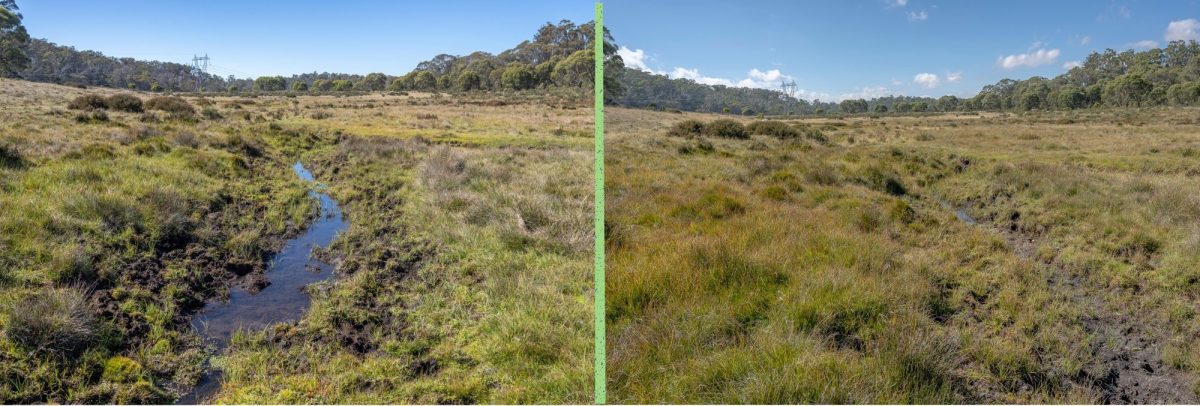
NPWS photos showing Little Peppercorn Flat on the Fiery Range in northern Kosciuszko National Park in March 2024 (left) and in March 2025 (right), photos brumby advocate Peter Cochran suggests are carefully staged. Photo: NPWS.
The reduction in horses is part of an effort to protect the park’s fragile ecosystems while balancing cultural heritage values.
The NPWS said these findings showed progress in reducing wild horse numbers towards the 2027 goal.
It says environmental benefits are already visible in areas where horse numbers have declined including improved vegetation cover, reduced trampling of fragile stream banks, and early signs of habitat recovery for threatened species like the broad-toothed rat.
The agency plans to continue monitoring water quality, wildlife and sensitive alpine areas to track progress.
NPWS says it will continue refining survey methods, expanding the use of technologies like thermal imaging, and working with researchers and community groups.
The next aerial survey is scheduled for 2025.
The culling program has been controversial. Conservationists argue that it is essential to protect native ecosystems, while horse advocacy groups say the animals are part of Australia’s heritage and oppose lethal control methods.
Invasive Species Council CEO Jack Gough said the declining numbers proved the Minns Government was keeping its election promise and that nature was responding positively.
“Now we need all sides of politics to come together to overturn the law that mandates keeping 3000 feral horses in the park,” he said.
Indigenous ambassador and local guide Richard Swain echoed the call, saying, “It’s a national park, not a horse paddock. The land is finally healing — it’s time to remove the law that protects a feral animal over our native species.”
Brumby advocate Peter Cochran has challenged the reliability of the government’s horse population estimates, claiming it “just proves that the locals were right all along — the figures sent to the minister’s office were wildly exaggerated and based on flawed methodology”.
“We rode for five weeks and saw four horses in the northern end of the park,” he said, “but you have to be on the ground to count, not up in the air.”
He claims the regeneration images released by NPWS are carefully staged to support their narrative.
“I know these places well and you can see wheel marks in one of the photos,” he said, “but another photo is just downstream of a culvert where water has been redirected and in the absence of any other water, due to the current dry conditions, of course, the horses congregate there.”
He said conservationists saw regrowth as a positive sign, but failed to understand that increased vegetation created dangerous fuel loads.
“What conservationists see as regrowth, we see as fuel for fires — and they don’t understand the link between fuel loads and the environmental damage caused by bushfires.”
Mr Cochran said the areas “protected by brumbies during the 2003 and 2020 fires now have massive fuel build-up”.
“When the next fire comes through places like Geehi, Kiandra Plain and Blue Holes, the damage will be just as bad,” he said.
He has urged authorities to collaborate with people on the ground who have long experience with the horses and want to play a role in managing them more effectively.
The full 2024 survey report and data are available through the Department of Planning and Environment.




